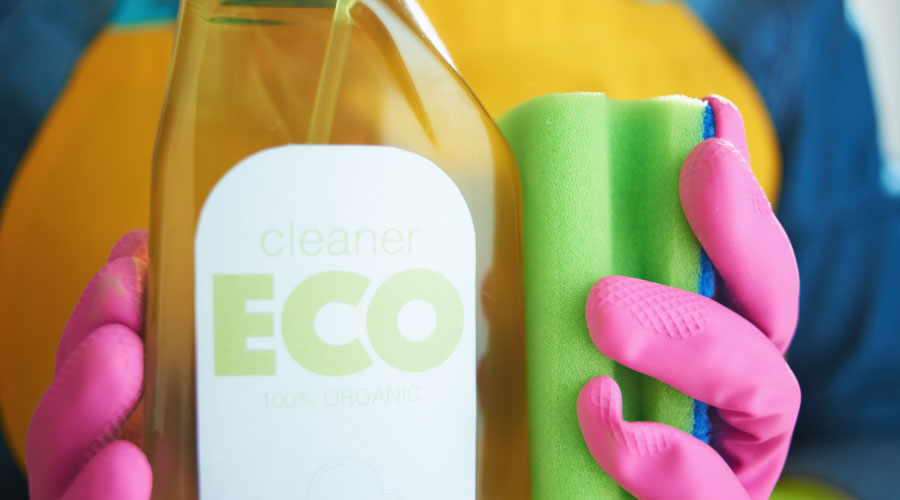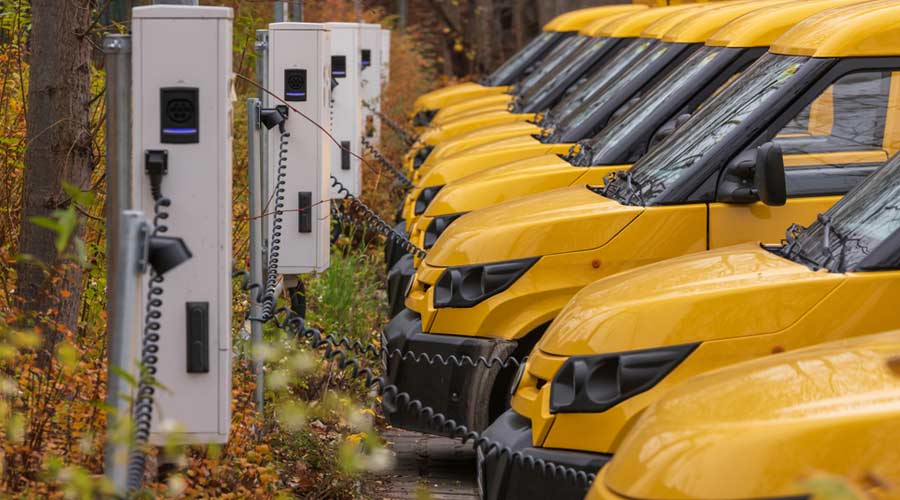USGBC Releases Top 10 States For LEED
With 2013 now in the books, the U.S. Green Building Council (USGBC) is again recognizing the states that are leading the movement for healthier, high-performing buildings with its ranking of the Top 10 States for LEED.
The 2013 Top 10 list includes some states that are perennial powerhouses for LEED and have made the list for the last several years. Illinois moved into the No. 1 spot in 2013, certifying 171 projects representing 2.29 square feet per resident. The mid-Atlantic region also continued its progress toward a sustainable built environment, with Maryland and Virginia earning spot Nos. 2 and 3, respectively certifying 2.20 and 2.11 per resident. Washington, D.C., while not counted among the states for the 2013 list, saw similar success, certifying 32.45 square feet for each of its approximately 600,000 residents in 2013.
The list ranks states based on their per-capita square footage of commercial and institutional space certified in 2013. The per-capita measure, calculated by dividing square feet certified by the official 2010 U.S. Census population figure for each state, allows for a fair comparison of the amount of green building taking place in each state relative to its population. It's also a human measure of green building, as LEED is as much about protecting people who use these buildings every day to live, work, learn, and play as it is protecting the planet.
The Northeast region was also well-represented in the rankings. Massachusetts certified 101 projects in 2013, with 2.09 square feet per resident, making it No. 4 on the list, while New York tied with California at No. 5, certifying 259 projects representing 1.95 square feet per resident.
States not included in 2012 but making the list for 2013 include Oregon, which ranked No. 6 with 47 projects certified in 2013, or 1.83 square feet per resident, and North Carolina, which ranked No. 7 with 1.80 square feet certified per resident. Other newcomers included Hawaii, with 17 projects certified in 2013, good for 1.71 square feet per resident, and Minnesota, rounding out the Top 10 list with 1.55 square feet per resident.
The Top 10 States for LEED reflects a strong year for the rating system in general. Worldwide in 2013, USGBC saw 4,642 commercial and institutional projects certify, representing 596.8 million square feet of real estate, up from 4,215 certifications in 2012 and 3,655 in 2011. In December 2013, USGBC certified its 20,000th commercial project, followed by its 50,000th housing unit certified under the LEED for Homes rating system just a few weeks later, in January 2014.
Also in 2013, USGBC launched LEED v4, the newest version of the rating system that continues to raise the bar for the entire green building industry, which McGraw-Hill Construction projects could be worth up to $248 billion in the U.S. by 2016. LEED v4 features increased technical rigor; new market sector adaptations for data centers, warehouses and distribution centers, hospitality, existing schools, existing retail, and midrise residential projects; and a simplified submittal process supported by a robust and intuitive technology platform.
Green Building Report
Briefings
New Credential Exams
New exams for the LEED Accredited Professional (LEED AP) and LEED Green Associate exams will be available June 30th. The new exams will include content for the new version of LEED — LEED v4. The last day to take LEED 2009 exams will be June 15th.
One change to the LEED AP credential is that, while strongly recommended, LEED project experience is no longer a requirement to receive the credential. According to the U.S. Green Building Council, "Practitioner experience is critical to the LEED AP designation and, as such, proficiency will be tested objectively within the LEED AP exam itself. The requirement to submit proof of LEED project experience at the time of application is no longer required as of June 30."
Healthy and Green
The Healthier Hospitals Initiative (HHI), which was launched in 2010 by twelve hospital systems, is rapidly growing as healthcare organizations buy into the goals to boost sustainability, improve purchasing practices, and lower energy costs. The current number of hospitals enrolled in the initiative is 837, according to HHI.
More than one quarter of the group's members are targeting safer chemicals. The focus on phthalate plasticizers in polyvinyl chloride has continued to expand, while a few also are questioning the safety of other plastics including polycarbonate.
HHI is an offshoot of Practice Greenhealth and Healthcare Without Harm, a group started by Gary Cohen in 1996 after the U.S. Environmental Protection Agency identified medical waste incineration as the leading source of dioxin, a carcinogen. The group shifted its focus to mercury as hospital waste incineration collapsed under its own weight as economically unsustainable.
For more information on HHI, visit www.healthierhospitals.org.
Top 10 States for LEED
| Rank |
State
|
Projects
certified
in 2013
|
Sq ft LEED
certified in
2013 |
Per-
capita
sq ft
|
| 1 |
IL |
171 |
29,415,284 |
2.29 |
| 2 |
MD |
119 |
12,696,429 |
2.20 |
| 3 |
VA |
160 |
16,868,693 |
2.11 |
| 4 |
MA |
101 |
13,684,430 |
2.09 |
| 5 (tie) |
NY |
259 |
37,839,395 |
1.95 |
| 5 (tie) |
CA |
595 |
72,729,476 |
1.95 |
| 6 |
OR |
47 |
6,991,942 |
1.83 |
| 7 |
NC |
133 |
17,183,099 |
1.80 |
| 8 |
CO |
124 |
8,894,187 |
1.77 |
| 9 |
HI |
17 |
2,323,379 |
1.71 |
| 10 |
MN |
51 |
8,205,155 |
1.55 |
| * |
Wash. D.C. |
106 |
19,524,216 |
32.45 |
|
U.S. Green Building Council
2101 L Street, NW, Suite 500
Washington, DC 20037
1-800-795-1747
Web site: www.usgbc.org
E-mail: info@usgbc.org
CHAIR
Allan Skodowski
Transwestern
CHAIR-ELECT
George Bandy
Interface
IMMEDIATE PAST CHAIR
Elizabeth J. Heiuder
Skanska
SECRETARY
Elizabeth Whalen
CalAg LLC
TREASURER
Lisa Shpritz
Bank of America
FOUNDING CHAIRMAN
S. Richard Fedrizzi |
Related Topics:














